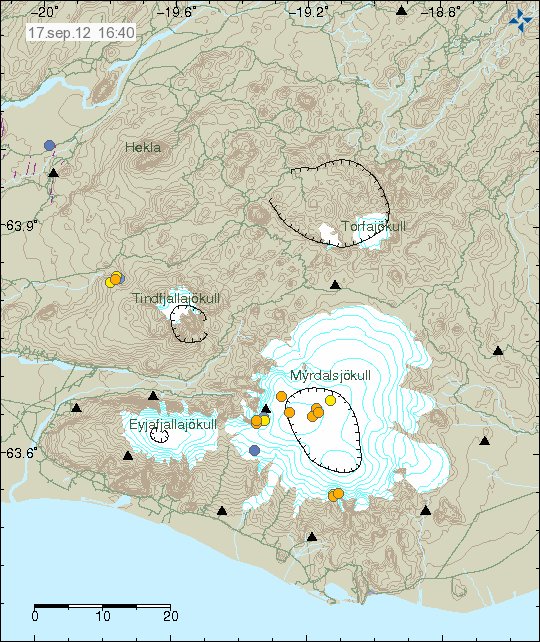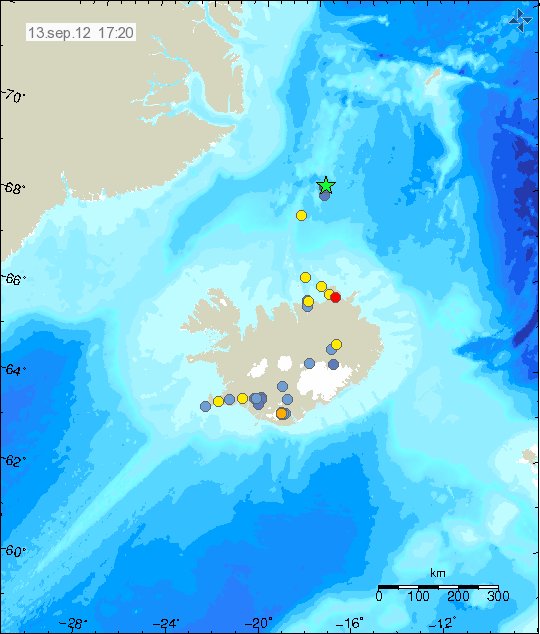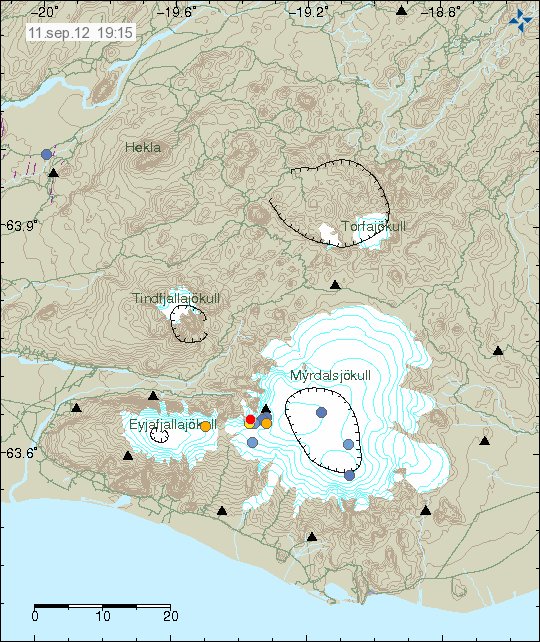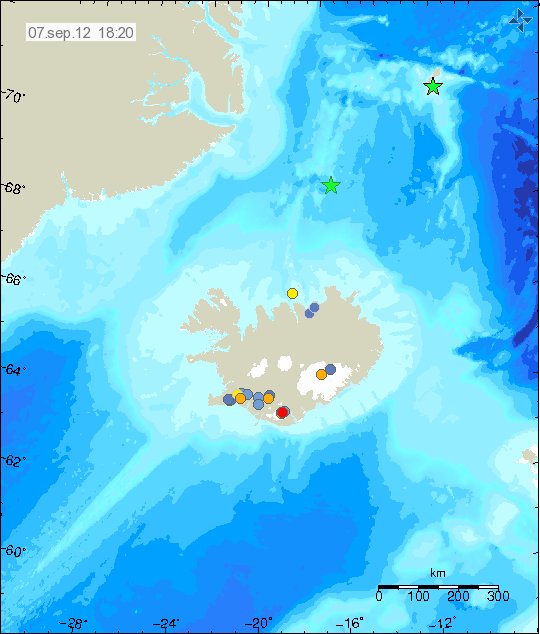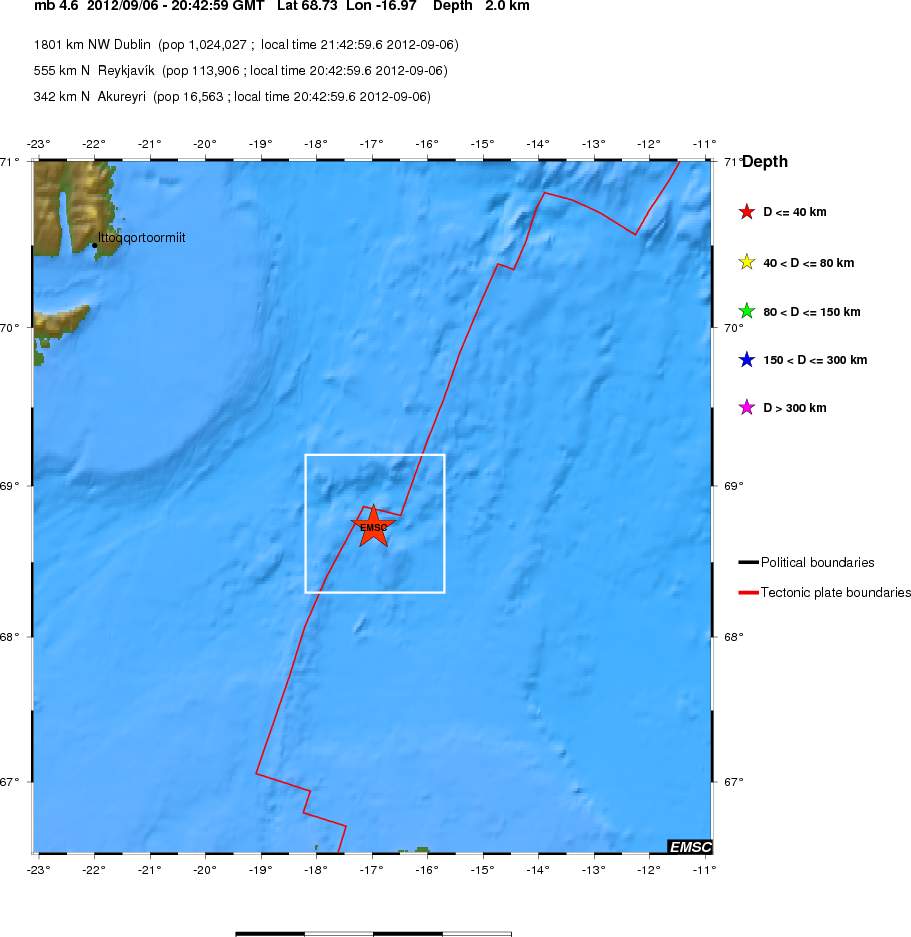On the 14. September 2012 an earthquake swarm started in El Hierro volcano, Canary Islands, Spain. The earthquake swarm is currently ongoing and there have been more then 300 earthquakes already. The earthquake activity is more or less constant at the moment. Since yesterday (16.09.2012) had around 182 earthquakes have taken place during the past 24 hour period (when this is written). The depth of this earthquakes is around 18 to 28 km. But this suggests an new magma intrusion into El Hierro volcano, or at least that magma is on the move inside El Hierro volcano from older sill inside it.
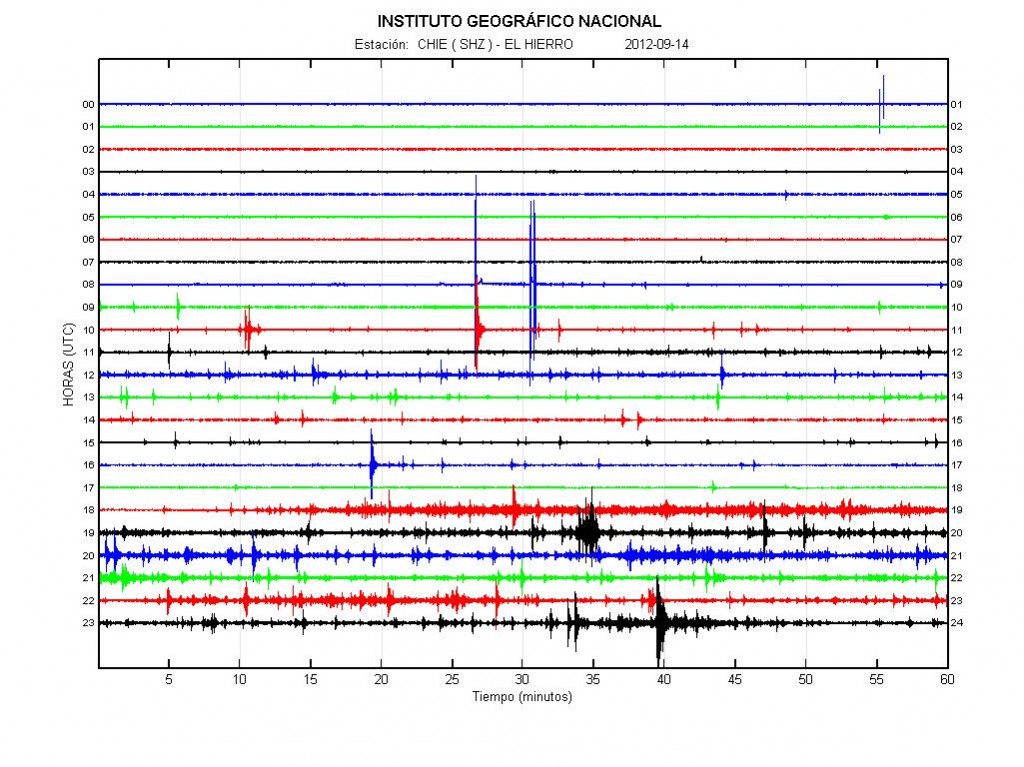
Start of the earthquake activity in El Hierro volcano. Copyright of this image belongs to IGN.
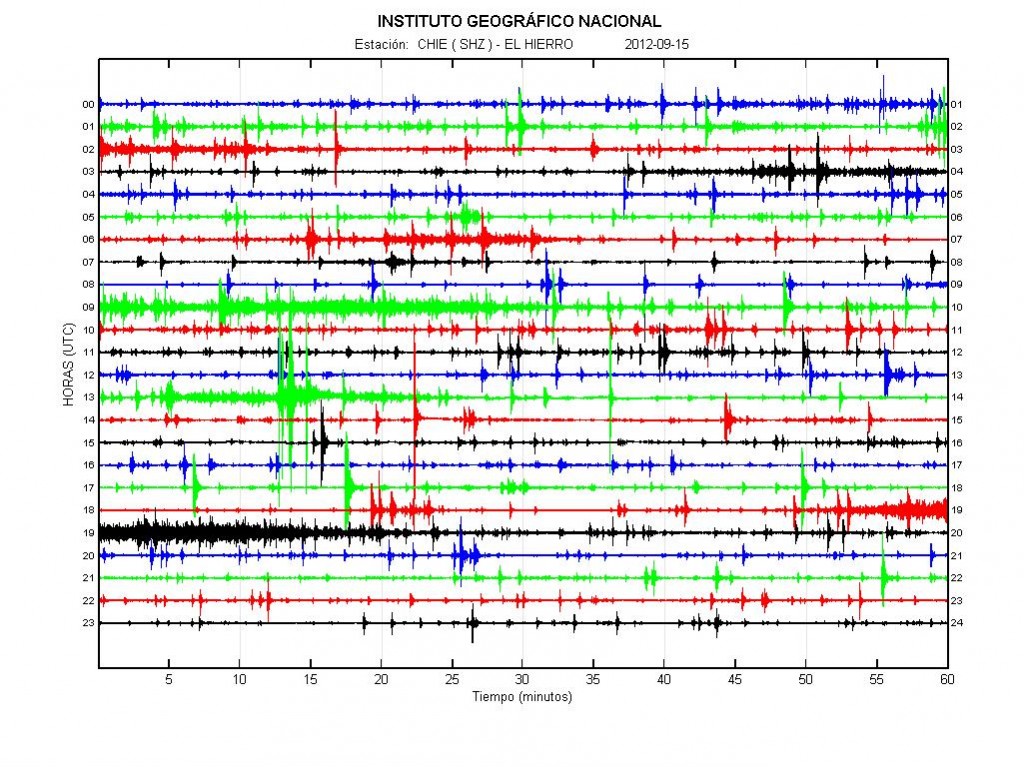
The earthquake activity on 15.09.2012. There is also an harmonic tremor pulse in this image. The first harmonic tremor pulse starts at 09:00 and lasts until 09:25 UTC. The second harmonic tremor pulse starts at 18:50 and lasts until 19:25 UTC. Copyright of this image belongs to IGN.

The earthquake activity yesterday (16.09.2012) until 21:14 UTC when this image was saved. No harmonic tremor pulses can be seen on this image. But earthquakes appear clearly on this image. Copyright of this image belongs to IGN.
This magma that is being injected into El Hierro volcano now is unlikely to erupted. But there is an pocket of magma located North of the El Hierro Island that might erupt. That magma pocket is only located about 10 km from the top of crust. In the start of the current that area was making earthquakes. But it soon did go silent. Why that I do not know.
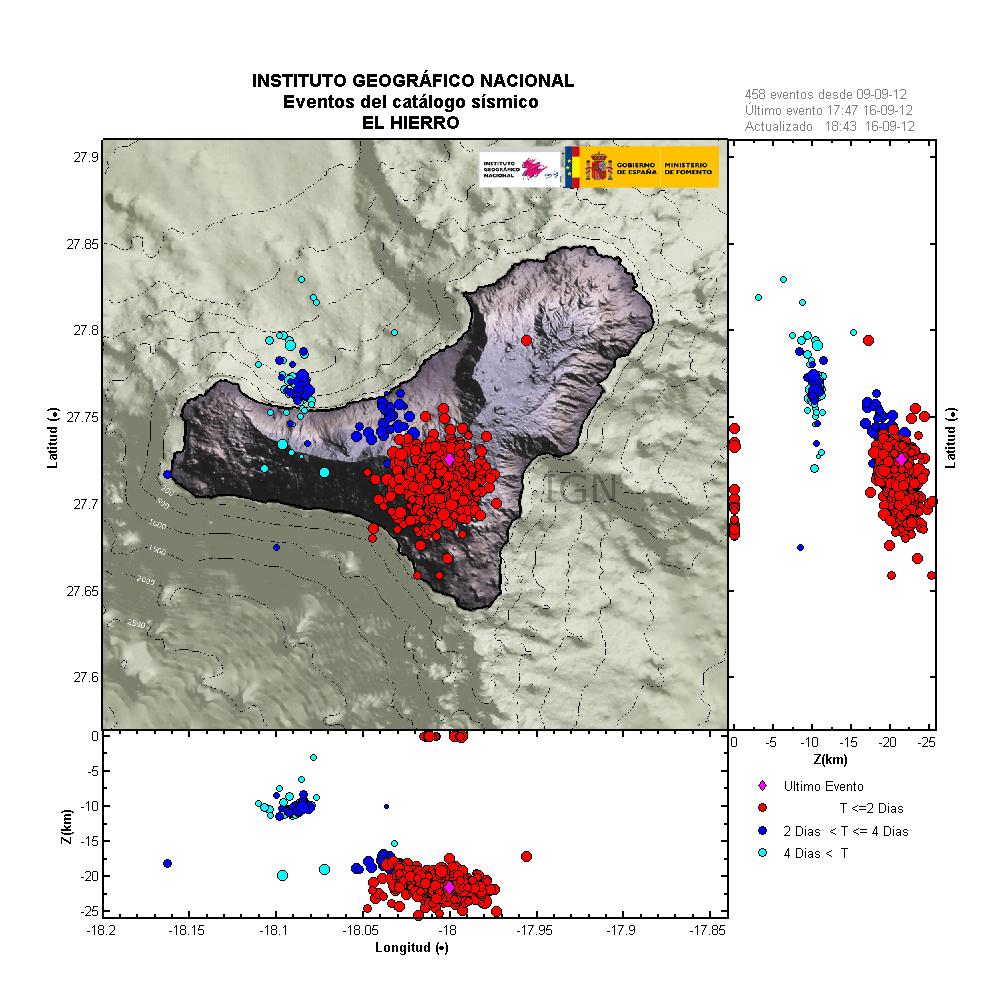
The current area of activity in El Hierro volcano. As can be seen it is mostly located at great depth. But the pocket of magma that is located at 10 km depth north in El Hierro volcano might be reason to worry about. This image shows the activity over the past 4 days. Copyright of this image belongs to IGN.
The area that I worry about is marked by blue dots in the image above.
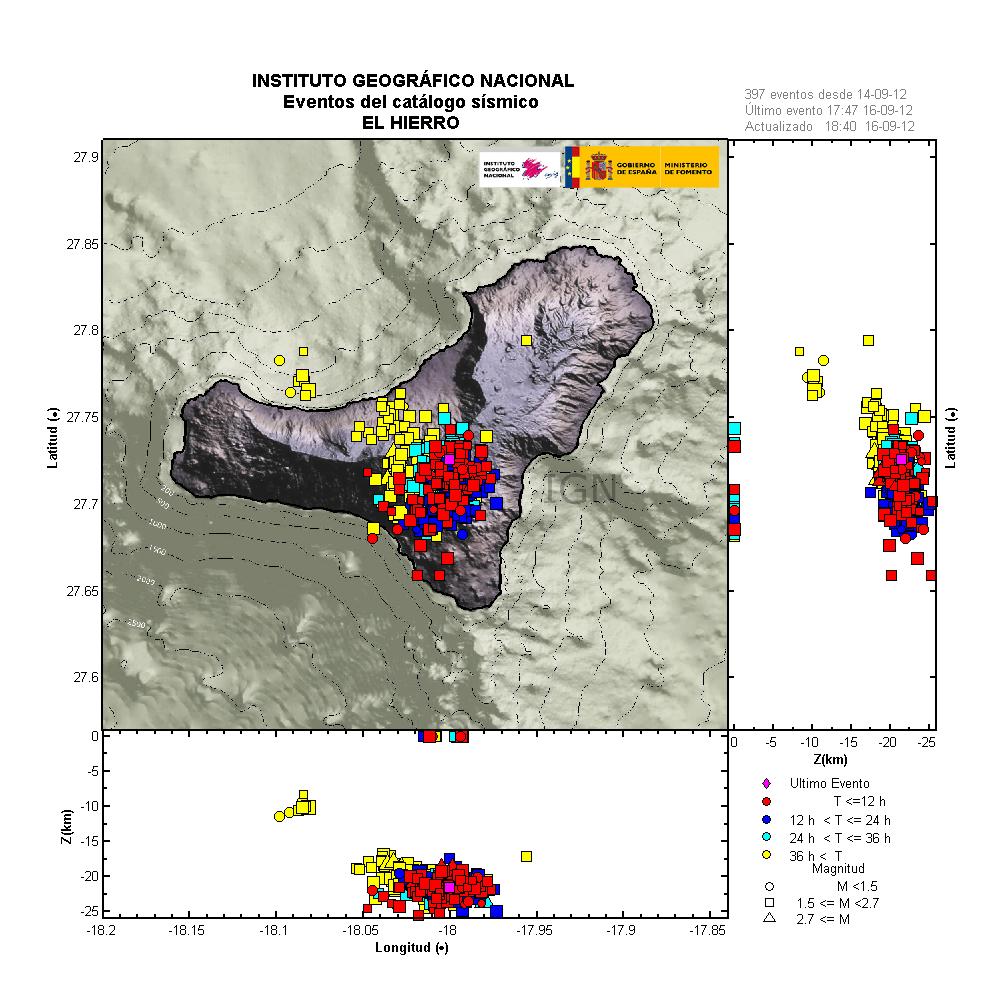
The current activity over the past 36 hours in El Hierro volcano. This image clearly shows where most of the activity has been taking place during this time period. Copyright of this image belongs to IGN.
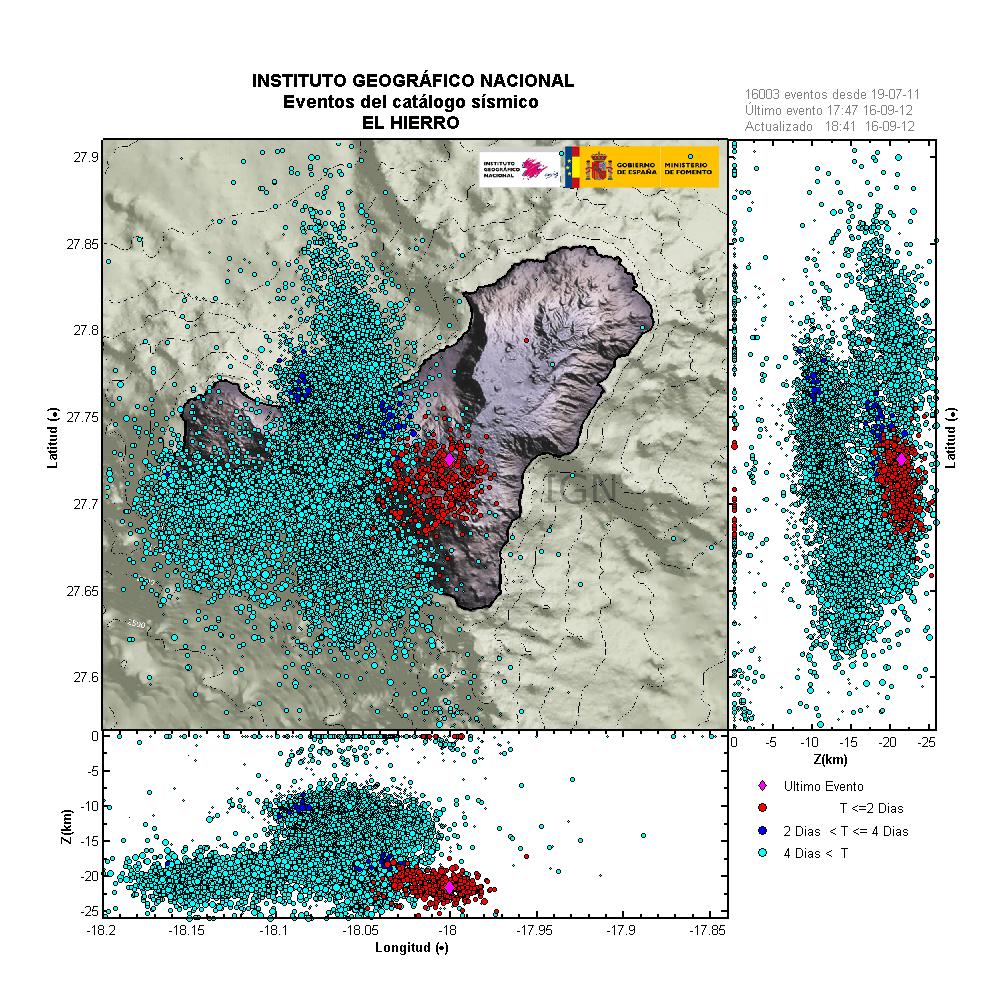
Earthquake data for the past 1 year in El Hierro volcano. Copyright of this image belongs to IGN.
It is only when we get the earthquake data for past 1 year when things get really interesting. Based on this data. Magma is now already at the depth of around 10 km in El Hierro volcano. Why it has not erupted is hard to answer (the answer might come after an eruption takes place. But no sooner). There are even clues in this image that some of the magma might be as shallow as 5 km. But it is hard to see it for sure. This image also suggest that amount of magma in El Hierro volcano, in the forms of magma sill is a lot more then what did erupt last year in El Hierro volcano. The tube that is feeding this magma into El Hierro volcano appears to be located at 18.05 longitude. That tube is marked by earthquakes going down well below 28 km depth.
The current earthquake activity in El Hierro volcano is creating new magma sill inside the volcano. That is just storing magma for possible future eruptions. The activity so far has been bit stronger in terms of amount of earthquakes since last earthquake swarm in June and July 2012. But that earthquake swarm did top at around 172 earthquakes during 24 hour period. So the current earthquake swarm is larger in that regard. But so far no earthquake has been larger then magnitude 3.2. But that might change if any larger earthquake happens. As often is the case.
It is hard to say what happens next in El Hierro volcano. But I would guess that once eruption starts in El Hierro volcano it might last for months. Based on the amount of magma that seems to have build up inside the volcano during the past few months. That build-up phase however does not seems to be completed at the moment. How long it is going to last is impossible to say at current time. But this is something that is worth keeping an watch for. El Hierro volcano is going to erupt basalt if the eruption is on land. Older volcano cones are not going erupt again. At least that is my assessment of what I have seen with satellite pictures.
